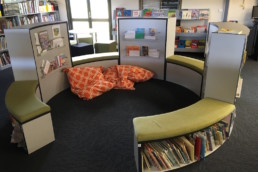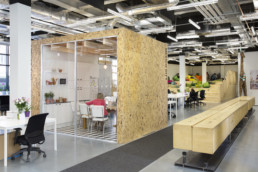Spaces thought to learn
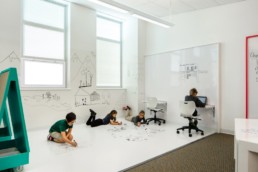
Not only spaces must be multifunctional, but also materials. So, you can take advantage of part of the walls that usually do not have any specific purpose and through the material give them another use.
Clear rooms with tables for small groups, to facilitate work for projects. With mobile tabs that are commonly used and that allow changing the distribution or distribution of tables.

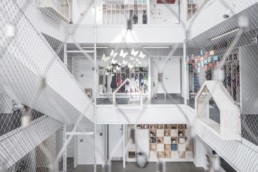
Solutions and elements will be adopted that will facilitate double functions, so here is a clear example of this. We have a metal mesh that makes of railing and billboard at the same time.
Illumination is absolutely key. It is more than proven that light affects how we feel, and therefore if we extrapolate it to a classroom, it is obvious that the classroom will “live” differently if we have good or bad lighting and this will translate into learning


Whenever possible, more permeability must be given to the classrooms and make them go out and that the outside comes in. We can help you in this task with resources such as corridor or similar doors as they blur the limits inside and outside.
In this same sense, if the exterior has to come inside, it can help us to incorporate “green” (plants) into the classrooms. And more in cases of city schools. The plants transmit serenity and make the classroom warmer while the relationship of children with plants is very positive, since they are the ones who will take care of them.
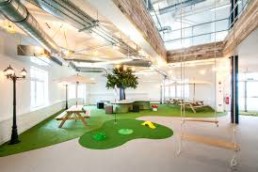
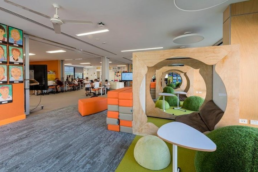
Spacious spaces but with half walls that separate activities and allow the polyvalence of the space, facilitating synergies between students and creating different areas of work in the same space.
Implementation of natural materials such as wood or cork that help to feel the closest and warmest space. While wood is more timeless and this will help to aesthetically hold up very well over time.
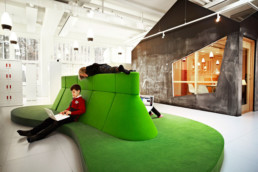
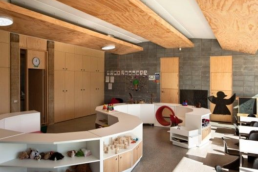
Semicircle spaces that make the space flow more and do not give up feeling so static. At the same time, it gives space new dimensions of approach and work both in group and individually.
Spaces within spaces, to achieve a “coocoon” effect that favors concentration and introspection that at certain times will be necessary to favor individual work or in very small groups
